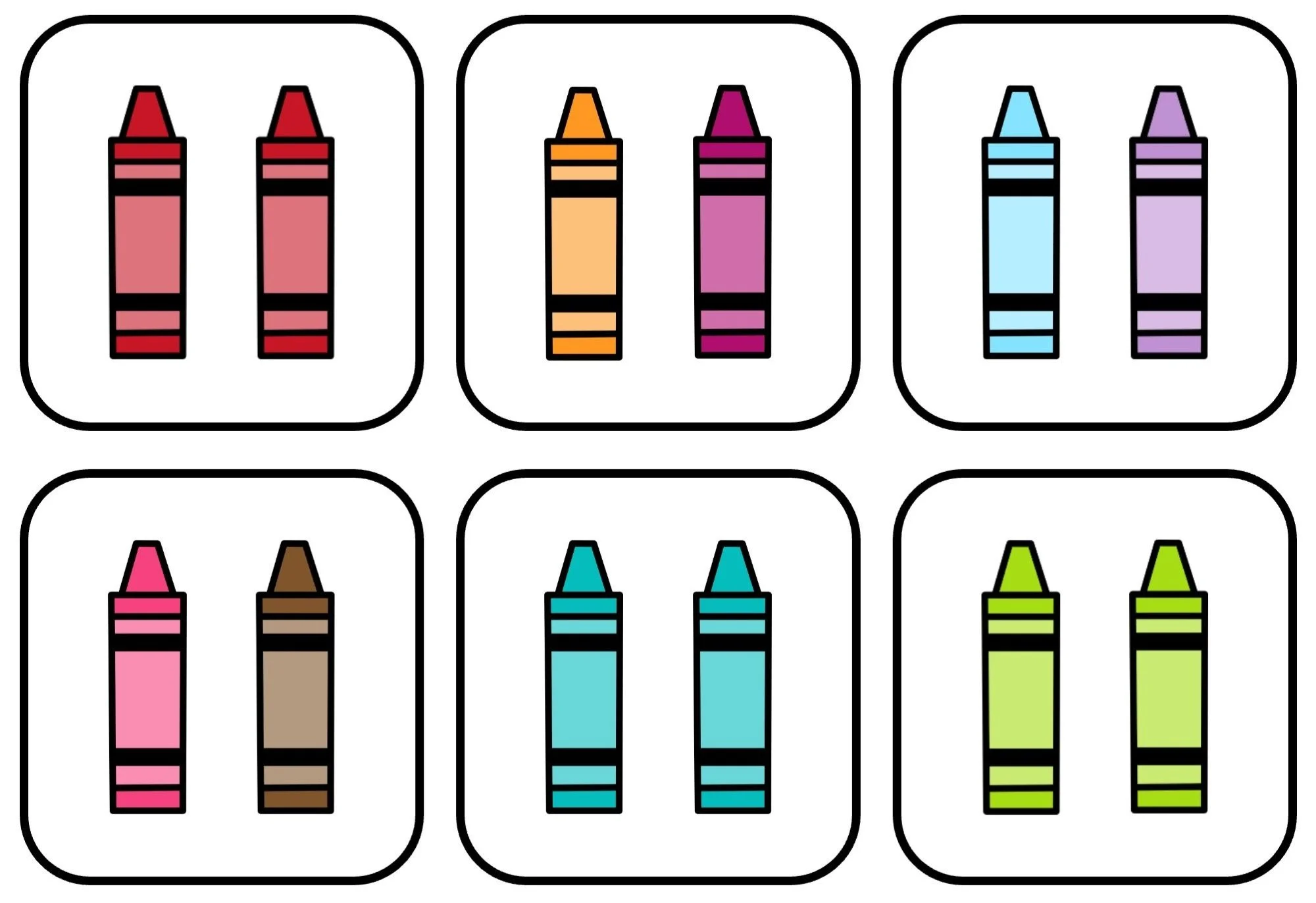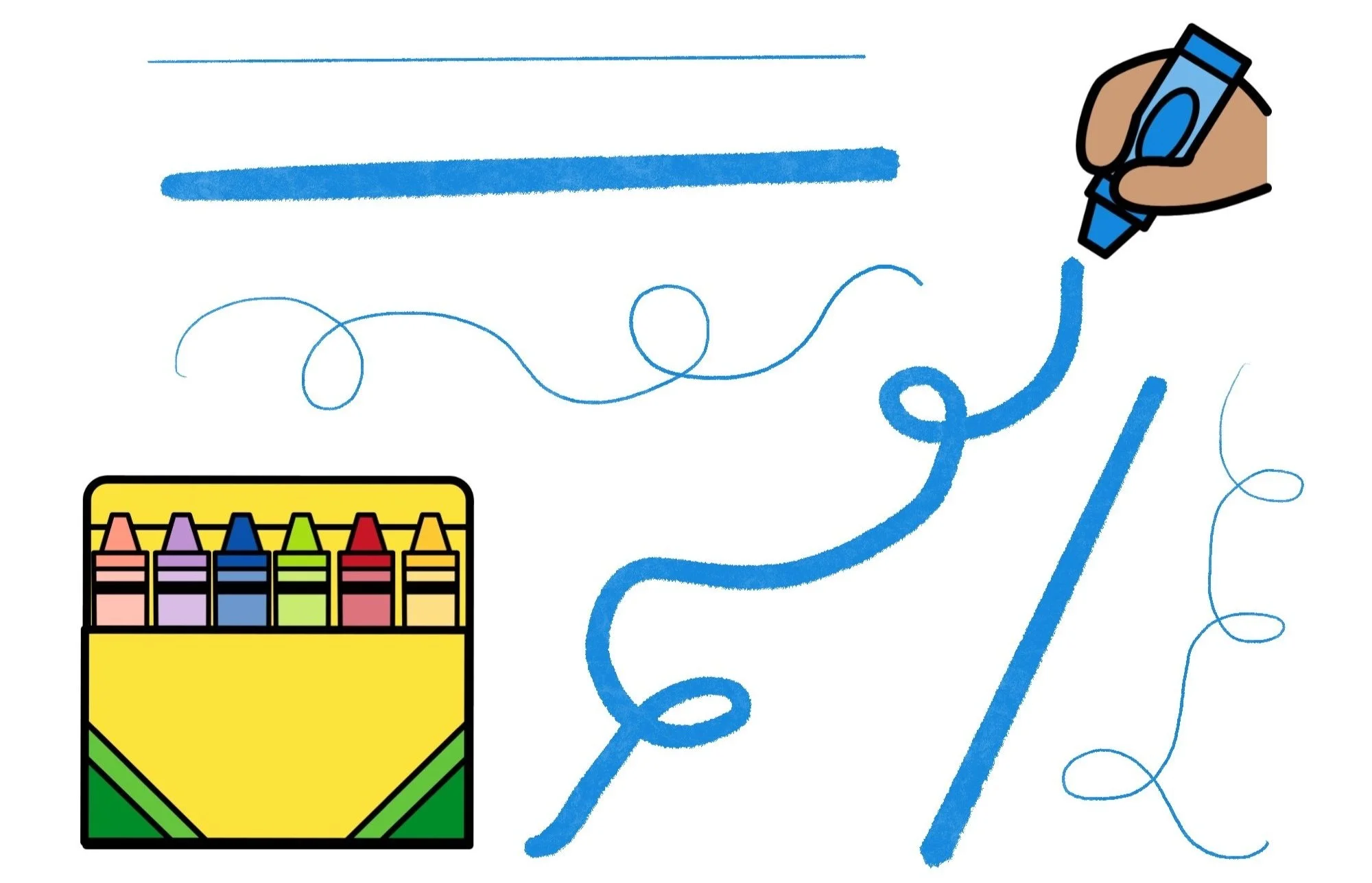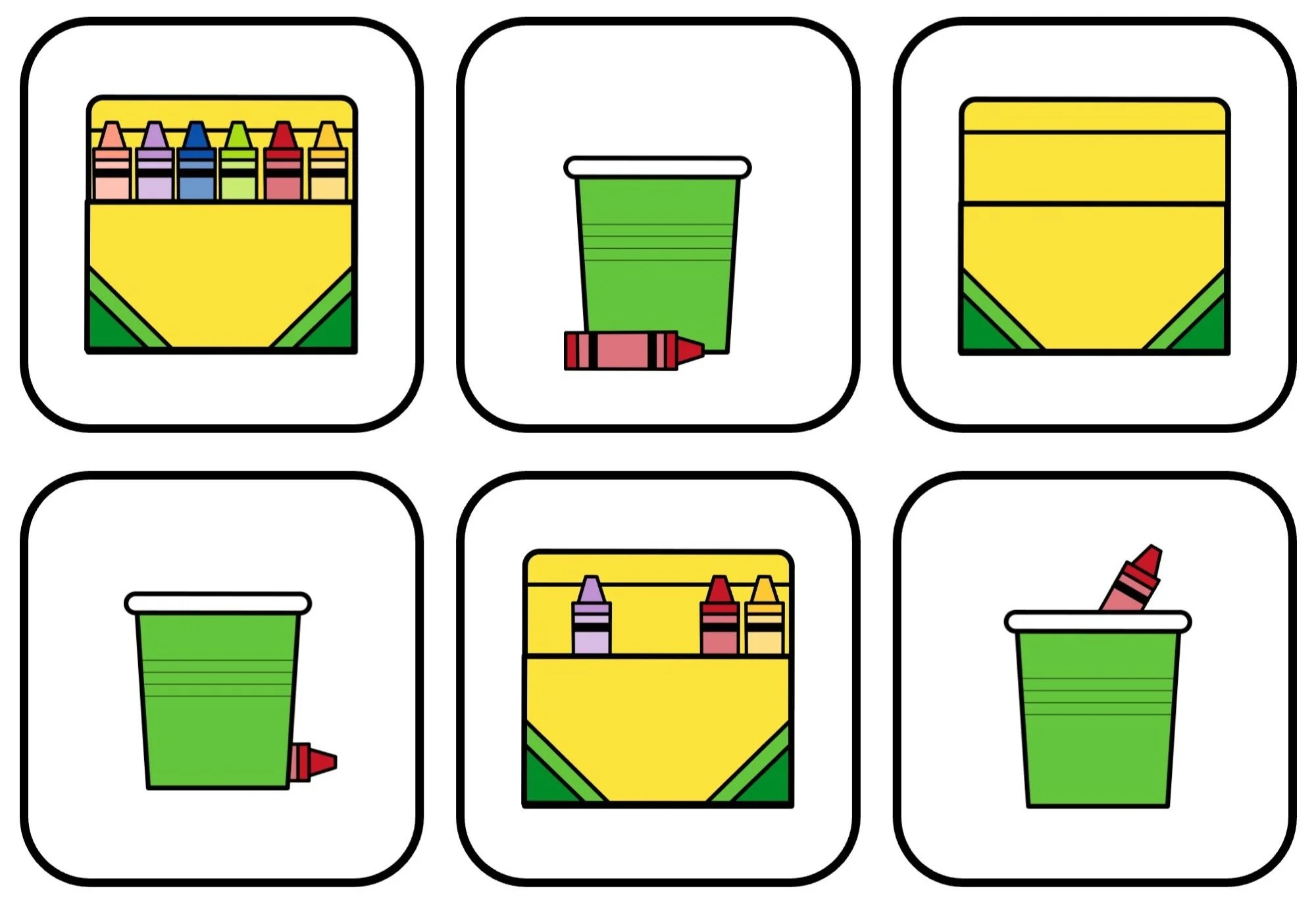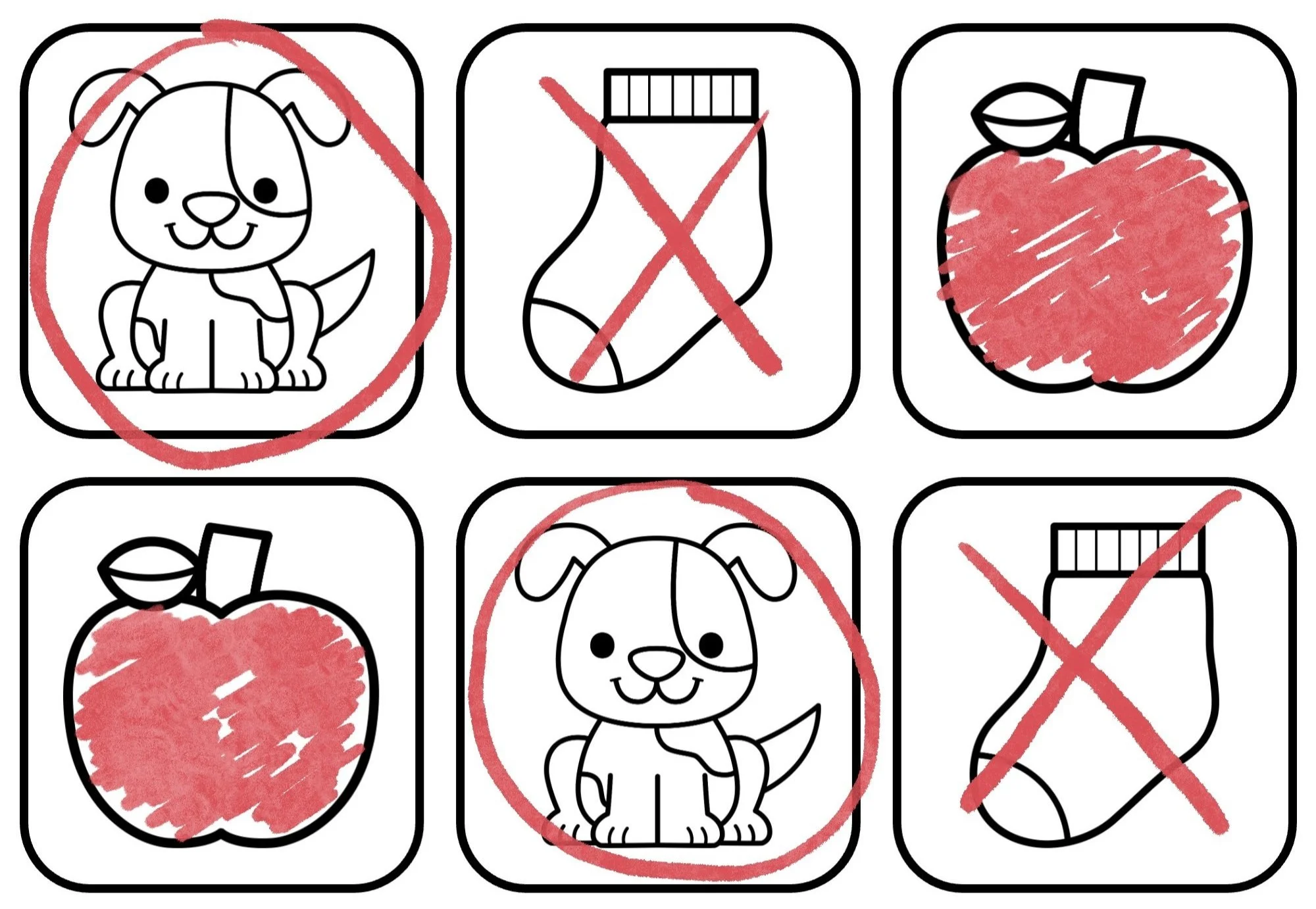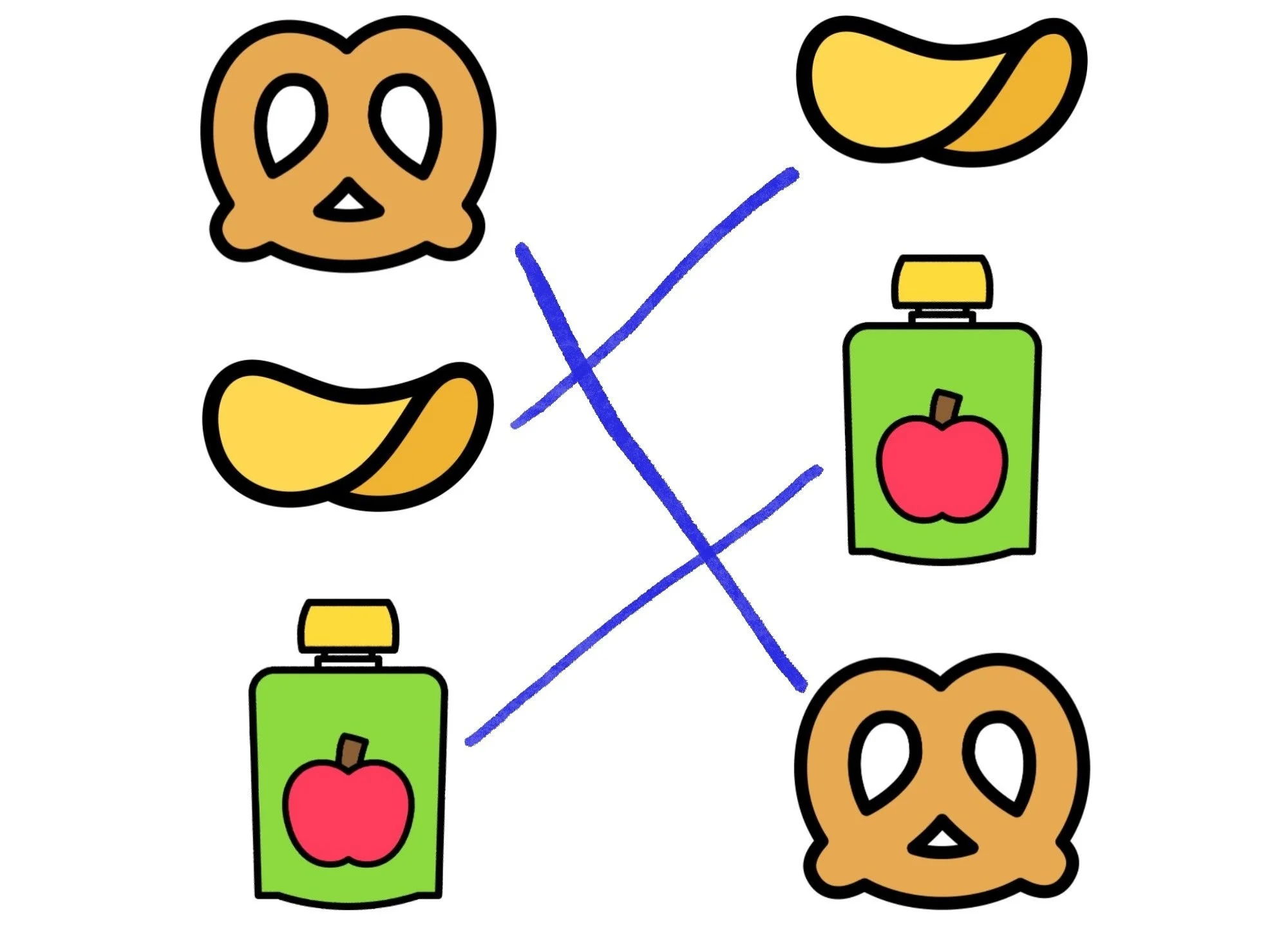Early Language Skills with Crayons: Fun Back-to-School Activities
Ready to get a jump start for the first day of school?
Today we’re using crayons to talk about classroom vocabulary.
We’ll learn about same and different, adjectives (or descriptive words), basic concepts, and following directions.
When you get to the end, pull out some crayons and practice what you’ve learned.
Same and Different
Look at the sets of crayons below.
Find the boxes that have two crayons that are the same.
Which boxes have crayons that are different?
Adjectives
We can also use crayons to learn about descriptive words.
These are also called adjectives.
Here are some adjectives that describe crayons.
Crayons have a tip on one end. It can be sharp and pointy or dull and rounded.
Crayons are made of wax. They can be messy if they melt.
New crayons come wrapped in a smooth, colorful paper.
Find the lines that match these adjectives:
curly
straight
thick
thin
Basic Concepts
Words like adjectives and prepositions are known as basic concepts.
Find the pictures that match the basic concepts in the sentences below.
The box is empty.
The crayon is behind the cup.
The crayon is in the cup.
The box is full.
The crayon is in front of the cup.
The box has some crayons in it.
Following Directions.
Kids are often asked to use crayons to follow directions in school.
Let’s make sure you understand some of the words teachers in their directions.
Circle
To circle something means to draw a circle shape around the outside of the object.
Example: “Draw a circle around each dog.”
Color
A teacher may ask you to color, or color in, a picture.
This means to take a crayon or marker and fill in the picture.
Example: “Use a red crayon to color in the apples.”
Cross Out
To cross out a picture or a word we put a big X over the picture.
Teachers oven ask kids to cross out something that doesn’t belong.
Example: “Use your crayon to cross out the socks.”
Underline
When asked to underline, we draw a line below the picture or word.
This is often used to mark that that thing is important.
Example: “Look at the pictures above and underline the animals.”
Match
There are several ways to match objects, picture, or words.
This can be matching two objects, cutting and pasting things together, or drawing a line.
Example: “Draw a link to the foods that match.”
Answers
Same and Different
Top row: same, different, different
Bottom row: different, same, same
Prepositions
Top row: full, in front of, empty
Bottom row: behind, some, in
Illustration Credits: Kari Bolt, Bunny on a Cloud, LittleRed

